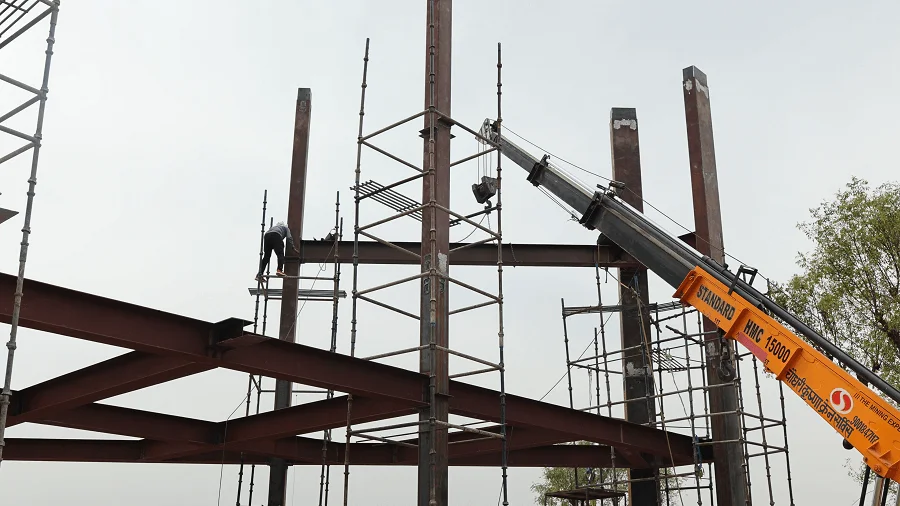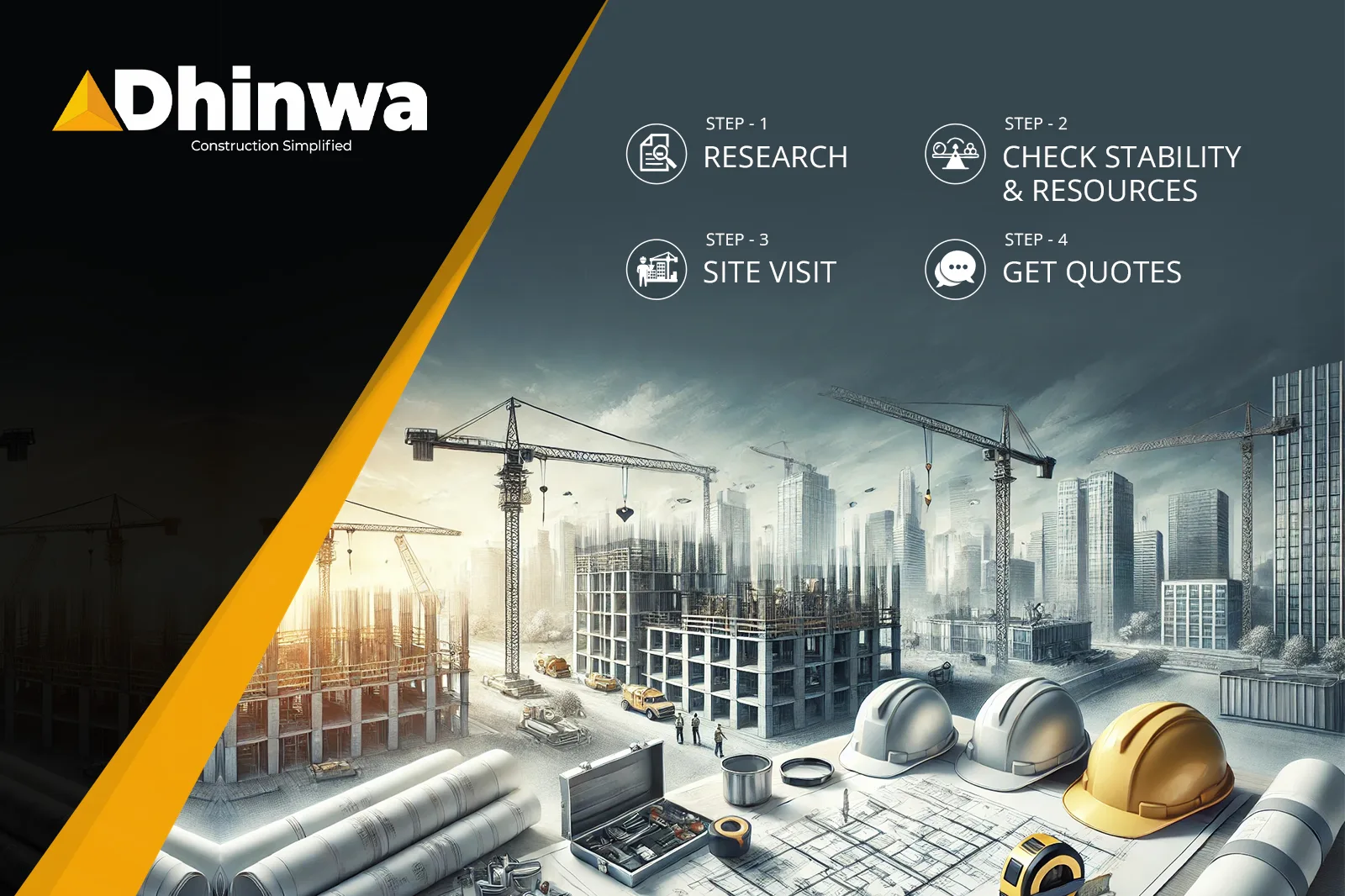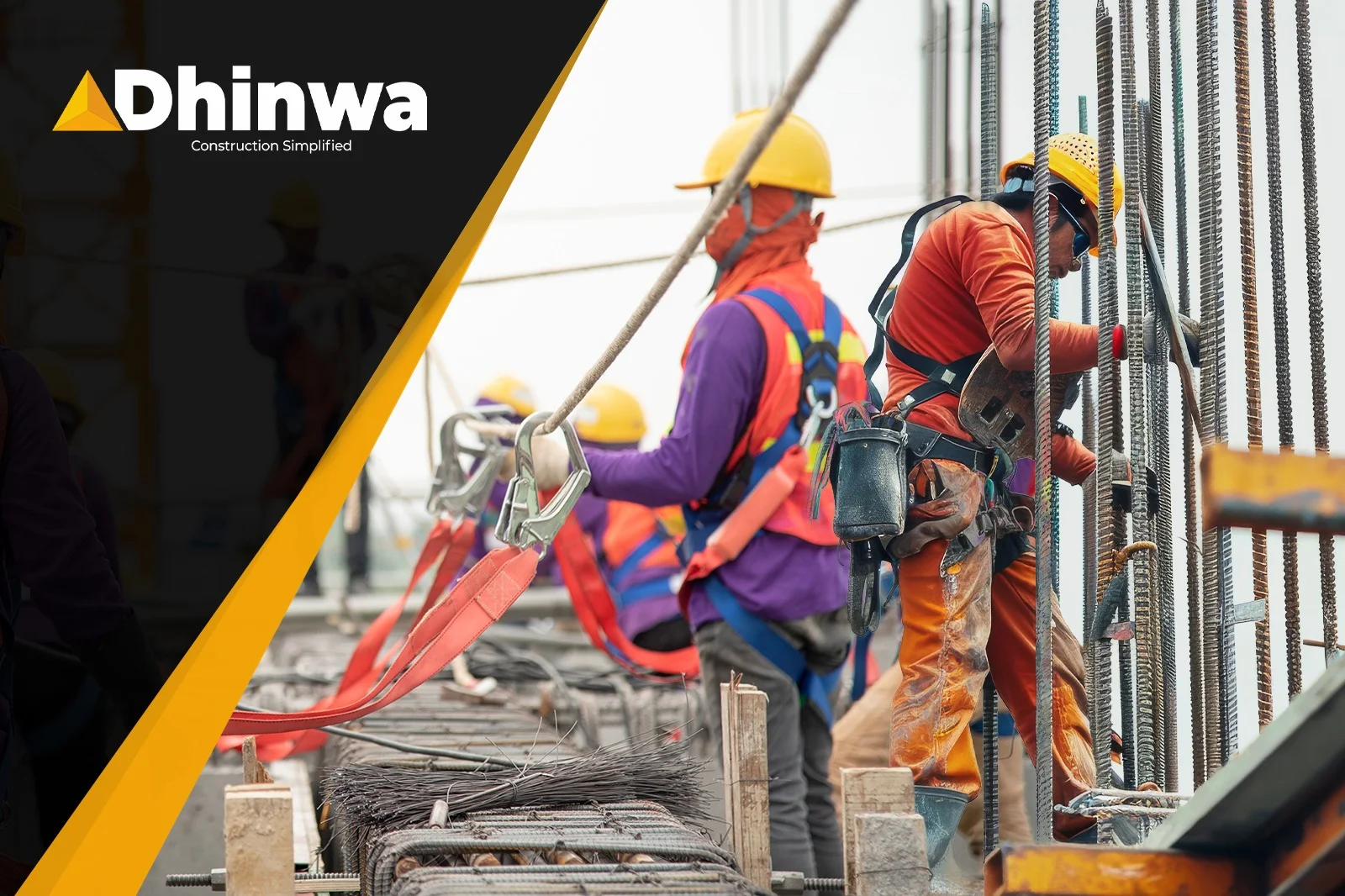High-Rise Building Construction Process: A Step By Step Guide

Table of Contents
High-rise building construction is a complex process that involves careful planning, design, and execution. The construction of tall buildings has been a symbol of progress and innovation for centuries, and the techniques used to build them have evolved significantly over time. Today, high-rise buildings are constructed using advanced technologies and materials to ensure their safety and durability.
The process of constructing a high-rise building typically begins with the design phase, where architects and engineers work together to create a blueprint for the building. This phase involves determining the building’s height, shape, and layout, as well as selecting the materials and systems that will be used. Once the design is finalized, the construction phase can begin. Since we have constructed a number of flats in Jaipur and other cities, thus we are pretty confident in our ability to explain how are high rise buildings actually constructed.
During the construction phase, a team of skilled workers and engineers work together to erect the building. This process involves excavating the foundation, laying the groundwork, and constructing the building’s framework. As the building takes shape, systems such as plumbing, electrical, and HVAC are installed, and the building’s exterior is finished. Finally, the building is inspected to ensure that it meets all safety and building code requirements before it is occupied. Let’s dig into the process straight away. If you ever wondered, “How are high-rise buildings constructed?” then by the end of this guide, you will know it all. So let’s dig straight in;
Building Construction Process: Site Analysis and Preparation
Before starting construction on a high-rise building, it is essential to conduct a thorough site analysis and preparation. In the step-by-step process of building construction, this process involves several steps, including land surveying, soil testing, and site clearance. Although there are various types of buildings still, the following steps are a basic to all of them.
I. Land Survey
A land survey is the process of accurately measuring and mapping the boundaries and features of a site. This information is crucial for determining the placement of the building and ensuring compliance with local zoning laws and building codes. The survey should include measurements of the site’s topography, existing structures, and utilities.
II. Soil Testing
Soil testing is necessary to determine the soil’s composition and characteristics, including its strength, stability, and drainage capacity. This information is crucial for designing the building’s foundation and ensuring its stability during construction and throughout its lifespan. Soil testing should be performed by a licensed geotechnical engineer and should include a comprehensive analysis of soil samples taken from the site.
III. Site Clearance
Site clearance involves removing any existing structures, debris, or vegetation from the construction site. This process is necessary to create a clear and level surface for building the foundation and to ensure the safety of workers and equipment during construction. Site clearance should be performed by a licensed contractor and should include proper disposal of any hazardous materials or waste.
Overall, site analysis and preparation are critical steps in the high-rise building construction process. Properly conducting these steps ensures the safety and stability of the building and its occupants.
Design & Planning
I. Architectural Design

The architectural design of a high-rise building is a crucial aspect of the construction process. The design must take into account a variety of factors including the intended use of the building, the surrounding environment, and the aesthetic preferences of the client. The design must also comply with local building codes and regulations.
Architects use computer-aided design (CAD) software to create detailed plans and 3D models of the building. These plans show the layout of the building, the placement of windows and doors, and the materials used in the construction process. The design must also consider the safety and comfort of the occupants, including factors such as ventilation, lighting, and acoustics.
II. Structural Engineering
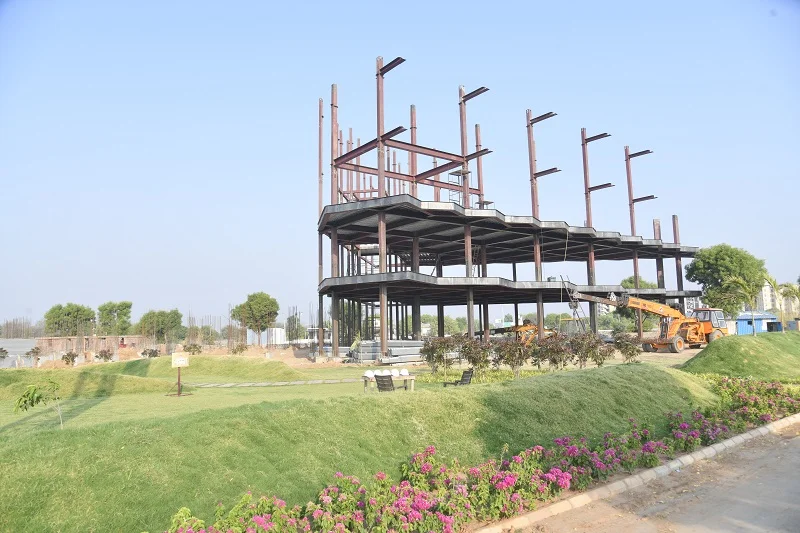
The structural engineering of a high-rise building is a critical component of the design and planning process. Structural engineers are responsible for ensuring that the building is structurally sound and can withstand the forces of wind, seismic activity, and other external factors.
Structural engineers use advanced software to create detailed models of the building’s structure and test its strength and stability. They also work closely with architects to ensure that the design is feasible and complies with local building codes and regulations.
III. Building Codes Compliance
Compliance with local building codes and regulations is an essential aspect of the design and planning process for high-rise buildings. Building codes vary by location and must be adhered to strictly to ensure the safety of the occupants and the structural integrity of the building.
Designers and engineers must be familiar with the local building codes and regulations and ensure that the design complies with them. This includes factors such as the maximum height of the building, the minimum distance between windows, and the materials used in the high-rise building construction process. Compliance with building codes is essential to obtain the necessary permits for construction and avoid costly delays or legal issues.
Foundation Construction
I. Excavation

Excavation is the first step in the foundation construction process. The excavation process involves removing the soil and rock from the site to create a hole that is deep enough to support the foundation. The depth of the excavation depends on the type of foundation selected, the soil type, and the load-bearing capacity of the soil. Excavation is typically done using heavy machinery such as excavators and bulldozers.
II. Foundation Type Selection
The foundation type is selected based on the soil conditions, the load-bearing capacity of the soil, and the height and weight of the building. High-rise buildings require a strong foundation to support their weight and withstand wind and seismic forces. The two main types of foundations used in high-rise building construction are shallow foundations and deep foundations. Shallow foundations are suitable for buildings with a horizontal spread more than a vertical height, while deep foundations are most suitable for high-rise building construction like a skyscraper or a castle built on very weak soil.
III. Concrete Pouring

Once the excavation is complete and the foundation type is selected, the next step is to pour the concrete. Concrete is the most commonly used material for high-rise building foundations due to its strength and durability. The concrete is poured into the excavation site and allowed to cure. The curing process can take several days to several weeks depending on the weather conditions and the type of concrete used. Once the concrete has cured, the foundation is ready for the next stage of construction.
In summary, the foundation construction process is a crucial step in high-rise building construction. It involves excavation, foundation type selection, and concrete pouring. The foundation must be strong enough to support the weight of the building and withstand wind and seismic forces. The selection of the foundation type is based on the soil conditions, load-bearing capacity of the soil, and the height and weight of the building.
Structural Framework
The structural framework of a high-rise building is an essential component that supports the weight of the building and provides stability. There are different types of structural frameworks used in the high-rise building construction process, such as steel and concrete. Each framework has its advantages and disadvantages, and the choice of the framework depends on various factors such as the building’s height, location, and budget.
I. Steel Structure Erection

Steel structure erection is a popular choice for high-rise building construction due to its strength, durability, and flexibility. The steel framework is pre-fabricated off-site, and then the components are transported to the construction site for erection. The steel structure erection process involves the use of cranes and rigging to lift and position the steel components into place. Steel structure erection is a fast process and is ideal for buildings with complex shapes and designs.
II. Concrete Framework

Concrete framework is another popular choice for high-rise building construction due to its durability and fire resistance. The concrete framework is constructed on-site by pouring concrete into formwork. The concrete framework is reinforced with steel bars to provide additional strength and durability. The concrete framework is a slower process than steel structure erection, but it is ideal for buildings with a simple design and a limited budget.
III. Cranes & Rigging
Cranes and rigging are essential components in the high-rise building construction process. Cranes are used to lift and position heavy components such as steel beams and concrete slabs into place. Rigging is used to secure the components during the lifting process to ensure safety. The choice of cranes and rigging depends on various factors such as the weight of the components, the height of the building, and the location of the construction site.
In conclusion, the structural framework of a high-rise building is an essential component that supports the weight of the building and provides stability. The choice of the framework depends on various factors such as the building’s height, location, and budget. Steel structure erection and concrete framework are two popular choices for high-rise building construction, and cranes and rigging are essential components in the construction process.
Building Envelope and Exterior
I. Facade installation
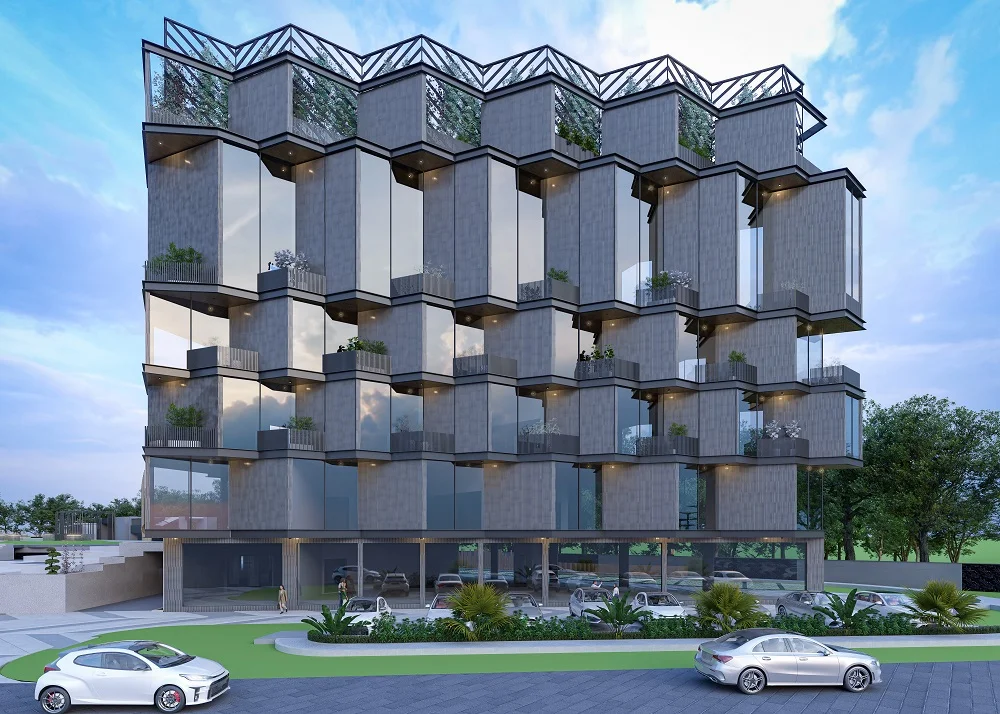
The facade of a high-rise building serves both an aesthetic and functional purpose. It must be installed with precision to ensure it is weather-tight and structurally sound. The installation process typically involves attaching the facade panels to the building’s structural frame. The panels may be made of a variety of materials, including glass, metal, concrete, or stone.
II. Window & Door Fittings
Windows and doors are an essential part of the building envelope. They allow natural light to enter the building and provide ventilation. The installation of windows and doors in a high-rise building requires careful attention to detail to ensure they are weather-tight and energy-efficient. The fittings used for windows and doors must be of high quality and installed correctly to prevent air and water infiltration.
III. Waterproofing & Insulation
Waterproofing and insulation are critical components of the building envelope. They protect the building from moisture infiltration and help to regulate temperature and energy usage. The installation of waterproofing and insulation in a high-rise building requires careful planning and execution. The materials used must be of high quality and installed correctly to ensure they provide the necessary protection and energy efficiency.
Overall, the building envelope and exterior of a high-rise building are critical components of the construction process. Proper installation of the facade, windows and doors, waterproofing, and insulation are essential for the building’s longevity, energy efficiency, and overall functionality.
Interior Construction
I. Flooring
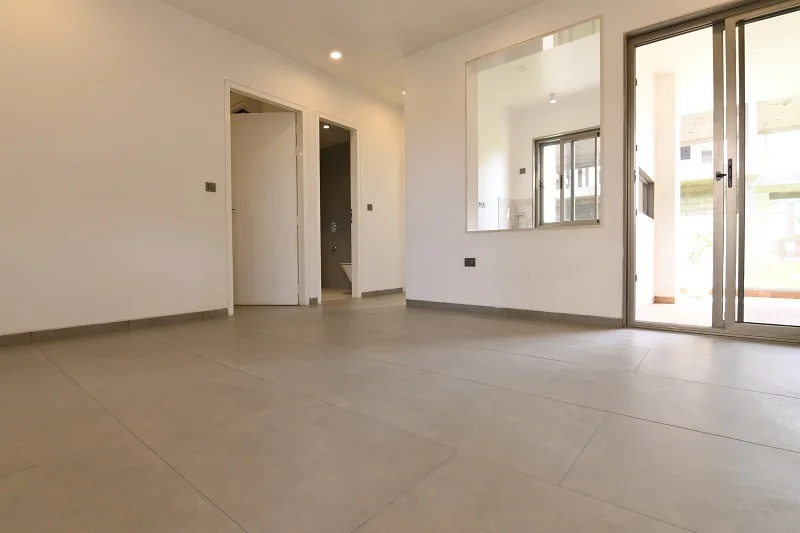
The flooring of high-rise buildings is critical to the overall safety and aesthetic appeal of the building. Typically, high-quality materials such as marble, granite, and ceramic tiles are used for the flooring of high-rise buildings. These materials are preferred because they are durable, easy to maintain, and provide an elegant look to the building. In addition, carpeting is also used in certain areas of the building such as offices, conference rooms, and lobbies. The carpeting is chosen based on its durability, ease of maintenance, and aesthetic appeal.
II. Interior Walls
The interior walls of high-rise buildings are constructed using a variety of materials such as drywall, plaster, and concrete. Drywall is the most common material used for interior walls because it is easy to install, cost-effective, and provides a smooth surface for painting. Plaster is used in areas where a more decorative finish is required. Concrete is used in areas where the walls need to be soundproof or fire-resistant.
III. Ceiling System
The ceiling systems in high-rise buildings are designed to provide a finished look to the interior of the building while also serving a functional purpose. Suspended ceilings are commonly used in high-rise buildings because they are easy to install, provide a smooth surface for lighting fixtures, and allow for easy access to mechanical and electrical systems. In addition, acoustic tiles are often used in high-rise buildings to reduce noise levels and improve the overall acoustics of the building.
Mechanical, Electrical, and Plumbing
High-rise buildings require complex Mechanical, Electrical, and Plumbing (MEP) systems to ensure the safety, comfort, and convenience of occupants. MEP systems are responsible for regulating temperature, providing adequate lighting, ensuring proper ventilation, and supplying clean water.
I. HVAC Systems
In high-rise buildings, heating, ventilation, and air conditioning (HVAC) systems are essential to maintain a comfortable indoor environment. These systems must be designed to provide adequate heating and cooling to all areas of the building, while also ensuring proper ventilation to maintain good indoor air quality. HVAC systems in high-rise buildings are typically centralized and consist of large air handling units, ductwork, and piping systems that distribute conditioned air throughout the building.
II. Electrical Wiring
Electrical systems in high-rise buildings must be designed to provide reliable and efficient power to all areas of the building. This includes lighting, power outlets, and other electrical equipment. The design of electrical systems in high-rise buildings must take into account the large number of occupants and the high power demand that comes with it. Electrical wiring must be laid out in a way that is safe, efficient, and easy to maintain.
III. Plumbing Installation

Plumbing systems in high-rise buildings are responsible for supplying clean water and removing wastewater. The design of plumbing systems in high-rise buildings must take into account the large number of occupants and the high water demand that comes with it. Plumbing systems must be designed to provide adequate water pressure to all areas of the building, while also ensuring proper drainage and waste removal. In addition, plumbing systems in high-rise buildings must be designed to prevent leaks and other water damage that can occur in multi-story buildings.
Elevator & Escalator Installation

Installing elevators and escalators in high-rise buildings is a critical process that requires careful planning and execution. Elevator installation is a complex process that involves multiple stages, including design, fabrication, delivery, and installation.
Before the elevator installation process begins, the elevator shaft must be constructed, and the elevator pit must be prepared. The elevator pit is the area at the bottom of the elevator shaft where the elevator car will rest when it is not in use. The pit must be deep enough to accommodate the elevator car and the machinery that powers it.
Once the elevator shaft and pit are ready, the elevator car and machinery can be installed. Elevator installation typically involves assembling the elevator car and machinery off-site and then transporting them to the building for installation. The elevator car is then lifted into place and secured to the guide rails.
Escalator installation is a similar process to elevator installation but with a few key differences. Escalators are typically installed in a continuous loop, which means that the installation process must be carefully coordinated to ensure that the escalator is installed correctly.
During the installation process, the escalator is assembled in sections and then lifted into place. The sections are then connected, and the escalator is tested to ensure that it is working correctly.
Overall, elevator and escalator installation is a critical part of the high-rise building construction process. It requires careful planning and execution to ensure that the elevators and escalators are installed safely and efficiently.
Safety Systems & Equipments
I. Fire Suppression
Fire suppression systems are an essential component of high-rise building safety. These systems are designed to detect and extinguish fires quickly and efficiently, minimizing damage and reducing the risk of injury or loss of life. There are several types of fire suppression systems available, including wet pipe systems, dry pipe systems, pre-action systems, and deluge systems. Each system has its own advantages and disadvantages, and the choice of system will depend on the specific needs of the building.
II. Emergency Exits
High-rise buildings must have adequate emergency exits to ensure that occupants can evacuate quickly and safely in the event of an emergency. Emergency exits must be clearly marked and easily accessible, and they must be designed to accommodate a large number of people. Stairwells are the primary means of egress in high-rise buildings, and they must be designed to provide sufficient space and lighting to allow occupants to evacuate quickly and safely.
III. Security Systems
High-rise buildings must have effective security systems to protect occupants and assets from threats such as theft, vandalism, and terrorism. Security systems may include access control systems, surveillance cameras, and security personnel. Access control systems are designed to limit access to the building to authorized personnel only, while surveillance cameras and security personnel can help deter criminal activity and respond quickly in the event of an emergency.
In addition to these safety systems and equipment, high-rise buildings must also have a comprehensive emergency plan in place. This plan should include procedures for evacuating the building in the event of a fire or other emergency, as well as procedures for responding to other types of emergencies such as natural disasters or terrorist attacks. By implementing these safety systems and equipment and having a comprehensive emergency plan in place, high-rise buildings can help ensure the safety and security of their occupants and assets.
Finishing Touches
Once the structure of a high-rise building is complete, the finishing touches are applied to the interior and exterior of the building. This section will discuss the three main types of finishing touches that are typically applied to a high-rise building: painting and decorating, exterior landscaping, and cleaning and waste removal.
I. Painting & Decorating

Painting and decorating are the final steps in the construction process of a high-rise building. The interior of the building is painted and decorated with the desired colors and finishes. The exterior of the building is also painted to give it a polished and finished look. The choice of paint and finishes is important as it can affect the overall aesthetic of the building. The paint used for the exterior of the building must be durable and resistant to weather conditions.
II. Exterior Landscaping
The exterior of a high-rise building is often landscaped to enhance its visual appeal. Landscaping can include the addition of trees, shrubs, and flowers to the building’s surroundings. The landscaping should complement the building’s architecture and design. In addition to adding visual appeal, landscaping can also provide environmental benefits such as improving air quality and reducing noise pollution.
III. Cleaning & Waste Removal
Once the construction process is complete, the building must be cleaned thoroughly to remove any debris and construction materials. Waste removal is also an important step in the process as it ensures that the building site is clean and safe. High-rise buildings often require specialized equipment and methods for cleaning and waste removal.
In conclusion, the finishing touches are an important part of the construction process of a high-rise building. Painting and decorating, exterior landscaping, and cleaning and waste removal are the final steps that give the building a polished and finished look. Each of these steps requires careful planning and execution to ensure that the building meets the desired aesthetic and environmental standards.
Inspections & Certifications
I. Local Authority Inspections
Local authorities are responsible for ensuring that high-rise buildings are constructed in compliance with local building codes and regulations. These inspections typically occur at various stages during the construction process, including the foundation, framing, electrical, plumbing, and fire safety systems. Inspectors verify that the building meets the minimum safety standards and that the construction is progressing according to the approved plans and specifications. If any issues are identified, the builder must correct them before the construction can proceed.
II. Safety Certifications
Safety certifications are crucial for high-rise construction projects. These certifications ensure that the building is constructed with the highest safety standards and that the materials used are of high quality. One of the most important safety certifications is the fire safety certification. High-rise buildings must have fire safety systems that are designed to detect, contain, and extinguish fires. The fire safety system must be tested and certified by a third-party inspector to ensure that it meets the local building codes and regulations.
Another important safety certification is the structural safety certification. High-rise buildings must be designed and constructed to withstand the forces of nature, such as earthquakes, hurricanes, and high winds. Structural safety certifications ensure that the building is designed and constructed to withstand these forces and that the materials used are of high quality.
III. Occupancy Permits
Occupancy permits are issued by local authorities after the building has passed all required inspections and certifications. These permits allow the building to be occupied by tenants or owners. Before issuing an occupancy permit, local authorities verify that the building meets all safety standards and that all required inspections and certifications have been completed.
In summary, inspections and certifications are critical components of the high-rise building construction process. Local authority inspections ensure that the building is constructed in compliance with local building codes and regulations. Safety certifications ensure that the building is constructed with the highest safety standards and that the materials used are of high quality. Finally, occupancy permits allow the building to be occupied by tenants or owners after all required inspections and certifications have been completed.
Project Close-Out & Handover
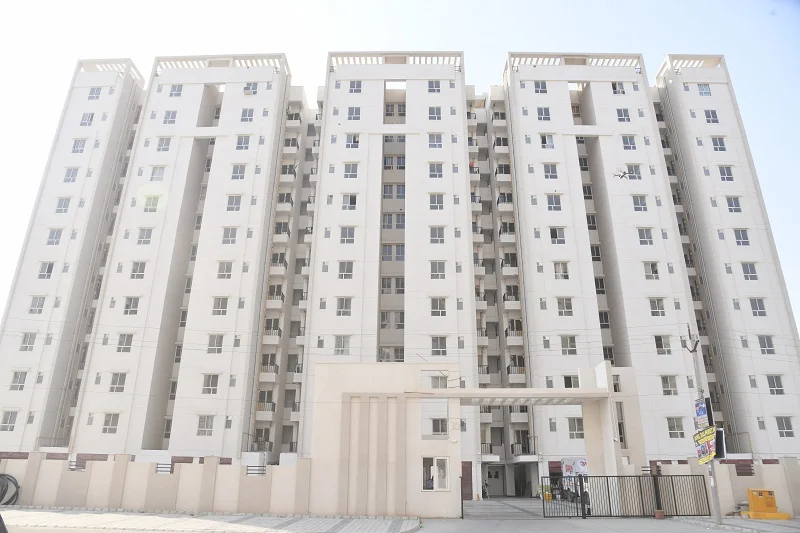
The final phase of a high-rise building construction project is the close-out and handover process. This process involves completing any remaining tasks, ensuring that all contractual obligations have been met, and delivering the final product to the owner.
The close-out process includes several steps, such as substantial completion, testing and commissioning, and collecting documents. Substantial completion is the point in construction when the owner and contractor agree a building is ready for its intended use, even if minor work still needs to be done. Testing and commissioning is essential in any project handover procedure, as up-to-date testing and commissioning data is crucial in ensuring that the building is safe and functional.
The handover process involves delivering a clean and accessible handover package to the owner. This package should include all necessary construction certificates, as well as any relevant operation and maintenance manuals. The handover package should also include a punch list, which is a list of any outstanding work that needs to be completed after the handover process.
The handover process is crucial in establishing a strong project legacy and achieving client satisfaction. Therefore, it is essential to have a well-structured closeout process in place to ensure that all contractual obligations have been met and that the final product is delivered to the owner on time and within budget.



